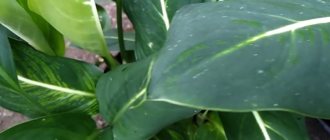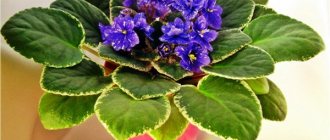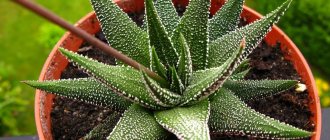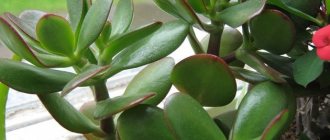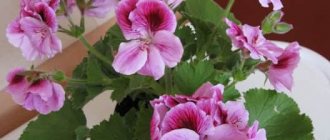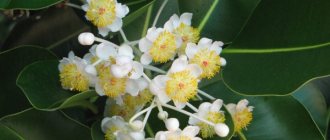Many people have noticed more than once how their mood changed when they were caring for flowers or even just looking at them. Experts have also long ago established the existing relationship between indoor plants and people’s behavior, and even certain traits of their character.
Many people know that plants have special energy. Without flowers it is impossible to create a truly cozy home. Your home will take on a completely different look when indoor plants appear in it - ferns, monstera, violets, etc. Even one exotic plant planted in a beautiful pot gives a special charm to the interior.
Home green pets
Indoor plants allow a person to get closer to nature without even leaving the apartment. And indeed, in gray panel buildings, they are the only things that help lift the mood. At the same time, these pets require care, without which they can completely wither. By selecting different species, plant growers can have a blooming garden on their windowsill throughout almost the entire year.
Some varieties are grown for their edible fruits, such as orange, pomegranate, lemon, etc., while others are grown for their ornamental appearance. One of the most common is the indoor fern, photos of which can often be found in plant growing magazines.
Many mysterious tales and legends are associated with it. Perhaps this is one of the most ancient plants on our planet.
general information
The pattern of its leaves cannot be confused with anything else. Archaeologists still find it in centuries-old fossils. Legends and traditions that surround indoor ferns, the types and names of which are numerous, live to this day...
For example, it is believed that it blooms only on the night of Ivan Kupala. Legends say that a fern bud opens with a loud crash, lighting up with a bloody flame, so much so that people could not look at it without closing their eyes. To pick this flower, you had to come to the forest on a dark night and sit in a circle outlined on the ground and protect from evil spirits. As soon as a fern bud “caught fire,” it was necessary to immediately pluck it and hide it so that evil spirits would not see it before the person and could not take it away.
Anyone who found this bright flower became prophetic. He could read the thoughts of the people around him, listen to what animals were saying or birds were singing. With the help of the power of heat-color, the boys managed to bewitch even the hearts of girls forever.
Will it never bloom?
No matter how beautiful the legend is, it is never destined to come true in real life. Because in fact, neither forest nor indoor ferns have ever bloomed and will never bloom. This is a family that, like mosses or horsetails, simply does not have flowers. Many will remember from a school course in botany that after a flower fades, fruits form in its place.
And the indoor fern has no seeds. They produce spores, which this plant uses to reproduce, and they must first touch water.
Description
Indoors, this plant is not only a decoration. It cleans the air of harmful substances and dust, absorbing and neutralizing odors, saturating with moisture and creating a favorable microclimate.
The indoor fern (the plant's homeland is not known for certain) differs from other higher plants - flowering or gymnosperms - in the absence of seeds and the ability to reproduce using spores. Therefore, in the kingdom of the green inhabitants of our planet, it occupies a special niche.
The stems of most species are underground, sometimes erect above ground, climbing and branched. The length of the stems can reach up to twenty meters. The leaves have a special structure. They are called fronds and can be complex-dissected or simple.
Indoor fern: types
This plant is part of an ancient group, the history of which far exceeds the existence of flowering plants on planet Earth. Apparently, this is why the homeland of fern - indoor and all other species - is unknown. In the Paleozoic and Mesozoic eras, many of them were large trees, the wood of which served centuries later as the basis for coal.
Choosing an indoor fern for growing, a photo of which every plant grower knows, is not so easy. There are almost two thousand different species that are suitable for growing indoors, although not all of them are commercially available.
And although the homeland of the indoor fern is not precisely known, there is an assumption that the plant came to us from tropical latitudes. Some species are ideal for planting in hanging baskets, while others, such as Asplenium nestis or Nephrolepis Bostoniensis, are very large, so they are kept as single specimens. Despite the fact that the homeland of indoor fern is presumably subtropical, there are varieties that love shade and, most importantly, humidity.
In indoor floriculture, according to the generally accepted classification, this plant is included in the group of decorative leaves. This is understandable: different types of this green pet attract attention with their original appearance. The variegated indoor fern is no exception. The United States is considered the birthplace of the pteris plant. However, some biologists are inclined to consider it a guest from South Africa or New Zealand. Several species are bred at home.
Signs about indoor ferns and the history of cultivation
Ferns are spread all over the Earth, and every nation has its own legends, beliefs and signs associated with it. Whatever rumors surround the plant, they all essentially boil down to one thing - the fern is endowed with mystical powers.
A characteristic feature of ferns is their lack of a flowering period. And it is this fact that gives rise to many legends around the plant. Among the Slavic peoples, the holiday of Ivan Kupala is widely known, the main idea of which is the flowering of ferns. It is believed that it is on this one night of the year that you can see the flowering plant. The reward in this case will be finding happiness or finding a treasure.
Existing beliefs are ambiguous: the bush is endowed with both positive and negative properties. Among the undoubted advantages of keeping a flower at home is its ability to have a beneficial effect on the psychological atmosphere in the house. It is recommended to keep ferns in large families, where each has its own character. The presence of a plant in a house reconciles residents among themselves, reduces the level of aggression and irritability, and promotes peace and tranquility.
In addition, according to legends, the flower attracts fortune to those who are passionate about games, contributes to their financial success and protects them from unreasonable and unexpected expenses. There are many stories about sudden enrichment after purchasing an indoor fern. Whether this is true or not is difficult to say. This only indicates that a flower in the house is not a cause for concern or fear.
On the other hand, the bush is endowed with dark magical powers. It is believed that he is the thief of happiness and prosperity, the source of misfortune and grief. According to legends, he absorbs all the positive energy in the house, spending it on his own growth. At the same time, its owners experience a state of powerlessness and emptiness, apathy and even depression. Another argument against keeping the plant in the house is that it can attract sudden illnesses and cause strife and failure.
Be that as it may, these are just legends. A beautiful and useful indoor plant is worth growing at home. It does not require complex care, and its appearance will become a source of good mood.
You may be interested in:
Growing canna in open ground and at home The beautiful canna plant is quite a heat-loving plant, but if you care for it properly, you can freely...Read more...
Nephrolepis
This is the most common variety of indoor ferns and belongs to the Devalliaceae family. It can often be found not only in apartments, but also in the offices of many companies. Some researchers believe that the homeland of the indoor fern Nephrolepis is Southeast Asia.
This species is considered one of the most popular and most unpretentious: caring for it is not difficult. To successfully grow the Nephrolepis fern, you do not need a lot of light: this plant is quite shade-tolerant, it can grow well under artificial light.
The only obstacle to its normal development is the dry air of apartments. Therefore, the green pet needs to be provided with high humidity, spraying more often, and especially in winter. The plant needs moderate watering after the soil dries out slightly. At the same time, a long-term lack of moisture in the earthen coma causes the leaves to die.
What types of ferns are there - names and varieties
The diversity of ferns, numbering more than 10 thousand species on the list, determines their widespread use. There are species adapted for growing at home and in an apartment, on the veranda of a house or in a country house.
Moisture-loving pterygoid and Indian ferns , small-leaved azolla and others are used to create aquarium compositions.
Pterygoid
Indian
Azolla
Decorative leaves of shieldweed , impressive size of bracken , spectacular spreading adiantum and many herbaceous varieties will fit well into the company of garden perennials.
Shieldweed
Orlyak
Maidenhair
Unpretentious nephrolepis , fast-growing davallia , unpretentious asplenium and a huge number of people from forest zones and subtropics will help create a cozy atmosphere in the house.
Nephrolepis
Davallia
Asplenium
It is strictly not recommended to place a pot with a flower next to the sleeping place . At night, the plant actively absorbs oxygen, which can cause short or long-term morning headaches.
Maidenhair
This fern is a houseplant, a photo of which proves its incredible beauty. It's quite common. Its leaves do not absorb moisture at all, so drops of water flow beautifully down them. Adiantums are represented by powerful but low bushes. This species does not tolerate direct sunlight. It has creeping stems, erect dictyostelic rhizomes, covered with narrow brown scales.
This species is associated with the most amazing name of indoor ferns - Venus hair. Indeed, this incredibly beautiful plant with a light green leaf blade up to forty centimeters long, segments fifteen millimeters wide, has a wedge-shaped base and a fan-shaped top. Venus hair is a frequent visitor to city apartments and country houses. Thanks to the amazing shape and beauty of the leaves, these indoor ferns are often used in compositions in winter gardens, where they form colorful design solutions.
Care
The most suitable temperature regime for the favorable growth of any type of fern is considered to be twenty degrees (Celsius). At the same time, this green pet is very afraid of cold weather. And although the homeland of the indoor fern is not known for certain, it loves a cool room. Experienced plant growers know that, contrary to the popular belief that it grows primarily in the shade, many varieties with tropical “roots” perceive bright, but diffused light well. The best place for an indoor fern in the house will be an eastern window. Moreover, in the winter season, it is desirable for it to be illuminated for several hours a day.
Ferns that grow indoors presumably came to us from tropical or subtropical countries. That is why they need to be protected from drafts and cold.
Replanting a house fern
The best time to transplant house ferns is spring. Flower growers say the small size of the flowerpot is the main reason for replanting. If the plant is young, then it must be replanted annually; the difficulty lies in the fact that the plant tolerates the procedure painfully and can recover from it over the course of several months.
In order to damage the plant as little as possible, they use not the classical method, but the transshipment method. The bush with all the soil is transferred into a pot of larger diameter.
There is no need to clear the soil from the fern roots. Roots that are too delicate and fragile cannot be carefully cleaned without damaging them. The only exception is replanting in case of plant disease, when it is necessary to identify damaged roots and trim them.
To grow ferns, shallow and wide flowerpots are used. As for the earthen mixture, you can choose a ready-made substrate in the store, the main thing is to take into account the acidity of the soil. The fern prefers acidic soil (acidity level from 5.0 to 6.6 pH).
If you prefer to make your own soil mixture, use this recipe:
- Leaf soil - one part;
- Humus - one part;
- Peat - one part;
- Bone meal – one fifth.
Watering
The soil environment in which the indoor fern develops should not be allowed to dry out. Or, on the contrary, it was too waterlogged. With the onset of winter, watering must be significantly limited. Almost all types of this plant require high air humidity, so you need to either constantly spray them, or install a mini-fountain or container of water nearby.
In addition, experts recommend giving ferns a warm shower once a week. In spring, the plant often requires replanting. After all, indoor ferns tend to grow greatly. When they become crowded, their roots cannot develop fully, which immediately affects the leaves.
Diseases and pests
The following diseases are worth noting:
- Anthracnose. Dark spots form on the leaves. This can be dealt with this way: the affected areas are removed and the plant is treated with a fungicide. Do not spray it for a week and limit watering.
- Root rot. The leaves begin to turn yellow and then darken. The plant is slowly dying. This disease can develop due to waterlogging of the soil. This can only be combated by reducing watering.
- Spots on leaves. Wet traces of brown color increase noticeably and cover almost the entire surface. It is worth removing all affected leaves and spraying completely. If you don't water it for a week, it can fully recover.
- Gray rot. It looks like mold, which gradually affects the entire plant. An effective way to combat this problem is to ventilate the room and fertilize it with nitrogen.
Common diseases of species
The variety of varieties of indoor ferns is amazing. However, they all have the same diseases. The main pests that affect indoor fern flowers are scale insects and spider mites. It is with them that the owners of these green pets must always fight. To do this, you need to spray the bushes and maintain high humidity in the room. And in order to finally get rid of, for example, a tick, you can buy special preparations in the store designed to combat these pests.
Sometimes diseases in indoor ferns occur due to inattentive care. If the leaves become pale and covered with brown spots, this means that the owner has overdid it with watering. Light areas on the leaves are characteristic of those plants that have been sunburned. The falling of the green mass and its death is a consequence of the fact that the air in the room is too dry, and there is also a lack of moisture in the earthen coma. When there is a lack of nutrients in plants, the leaves turn pale and their growth slows down.
If, due to overdrying, your indoor fern has lost its greenery, there is no need to despair: on this plant you just need to cut off all the leaves. Then it must be placed in a bright place and ensure that the earth is kept moderately moist. And very soon new leaves will appear on the green pet.
Caring for ferns at home
In general, the plant is considered unpretentious for indoor keeping. However, when caring, one should take into account its origin and the climatic characteristics of the regions that are considered its homeland. Some species are accustomed to bright light, others prefer shade or partial shade. The most important factors in flower maintenance are humidity, temperature and lighting.
You may be interested in:
Nephrolepis - home care, types of ferns and why do the leaves dry out? Nephrolepis is a perennial evergreen fern belonging to the Davalliaceae family. This plant…Read more…
Lighting
Fern fronds are very sensitive to bright light. And although the plant can be classified as light-loving, it is better to protect it from direct sunlight. The bright sun will cause burns, and as a result the plant will turn yellow or lose its rich, bright color.
Fern Lighting
To avoid this, it is better to place the flower near light sources, but not from the south, but from the east. In addition, even ideal light on the windowsill can become a serious obstacle to the growth of the bush. A plant with wide, spreading foliage will feel uncomfortable on a cramped windowsill. It is better to place it on a stand or use a hanging pot.
Temperature and humidity
The best temperature for keeping ferns is considered moderate, in the range from 15 to 23 degrees Celsius. It is ideal if there are no sudden changes in temperature.
Note!
When the thermometer drops below +12 degrees, the plant withers, and at high temperatures it is in danger of drying out and dying.
High humidity is a prerequisite for good bush growth. Dry air can lead to the death of the plant, so it is necessary to ensure that the humidity is between 50-60%. To achieve the desired effect, the fern can be sprayed with non-cold water.
Watering and fertilizing
To maintain intense and lush greenery, it is necessary to follow the correct watering regime. The plant requires regular watering, otherwise it will dry out and lose its characteristic elasticity. The water must be settled, free from impurities and chlorine. The peculiarity is that the fern is watered through a tray. Water should not get on the shoots, and spreading fronds often do not allow one to get to the ground and moisten it from above.
Watering the fern
The period of active growth is a reason to pay special attention to the plant. Not only is regular watering required, its moderation is also important. It is better if the plant receives moisture from the air. You should not flood the soil, otherwise the roots will rot and the flower will die.
Fertilize the plant no more than once a month. In winter, when the plant is dormant, fertilizing is not done. Fertilizer is added to water for irrigation. For these purposes, use a universal fertilizer or a special one for palm trees and ferns.
Diseases, pests and methods of combating them
Proper care of the bush almost completely eliminates plant diseases. However, some errors in maintenance lead to flower diseases:
- Excessive moisture not only leads to rotting of the root system. The leaves also lose their decorative appearance, become covered with brown spots, then dry out and die.
- Cold water for irrigation is the cause of nematodes. They affect both the leaves and the root system. It's difficult to get rid of them. You can try to replant the flower by treating it with Actellik, but this does not guarantee the salvation of the plant.
Root nematode - In dry air, ferns most often suffer from aphids, scale insects or thrips. The best prevention of infection is regular spraying. If he gets sick, be sure to treat with a standard insecticide.
Hygiene
Fern disease is always easier to prevent. To protect a flower from pests and diseases, you must follow simple rules:
- adhere to all basic care requirements;
- provide the necessary air humidity;
- wipe the leaves or spray them;
- monitor the frequency of feeding - its lack is usually indicated by pale leaves;
- observe temperature and light conditions.
With proper care, the fern will become a worthy decoration of your home and will provide comfort and a pleasant microclimate in the house.
